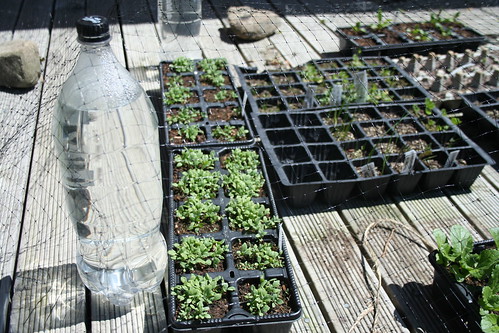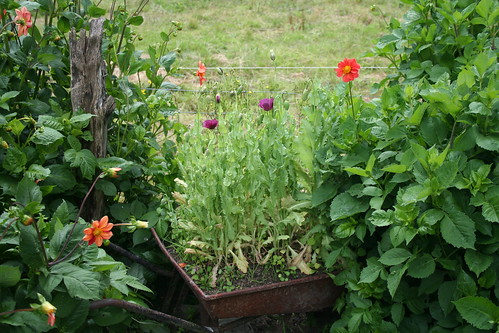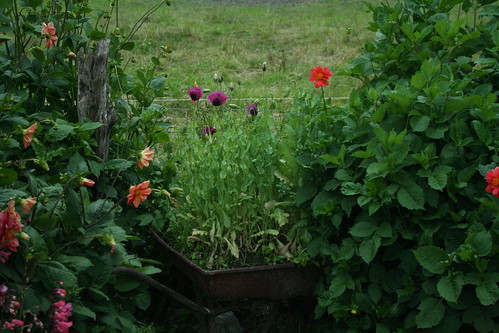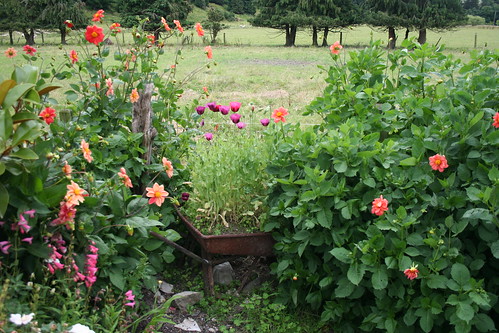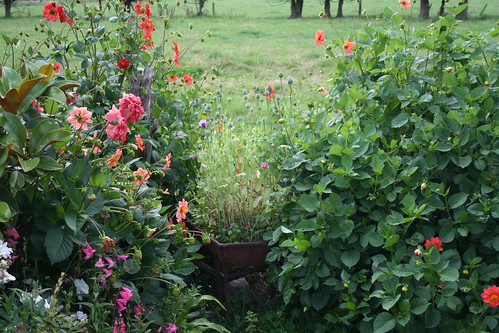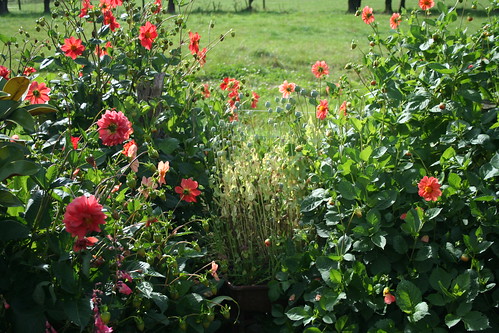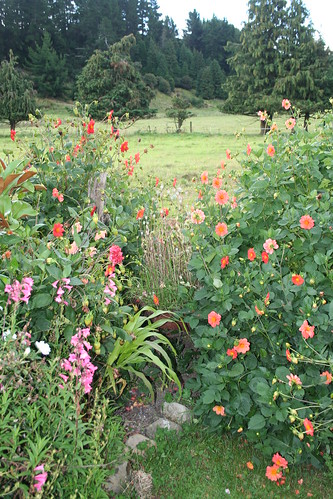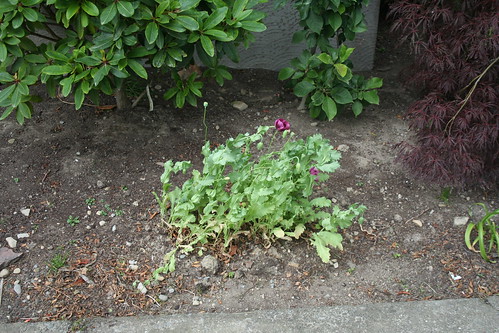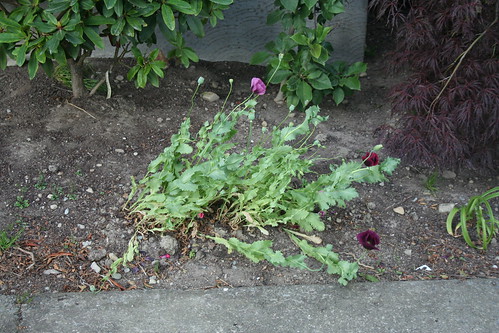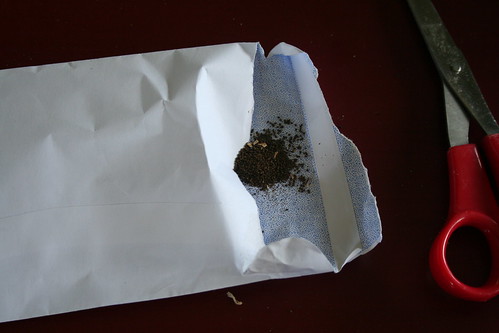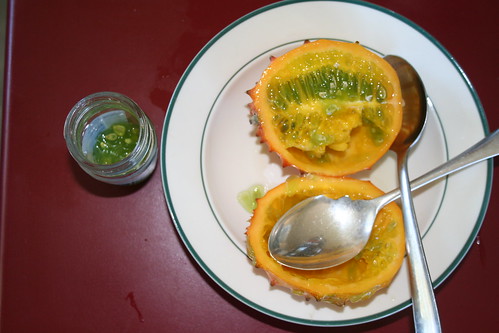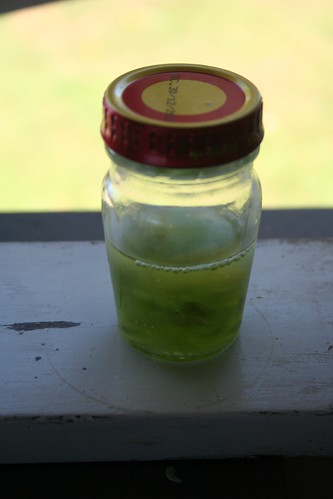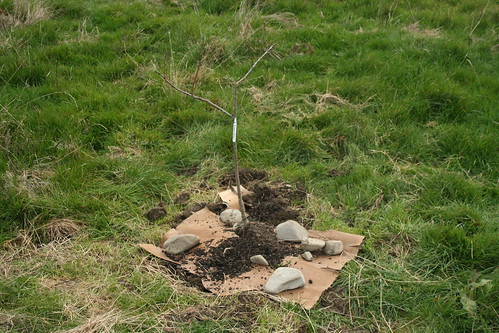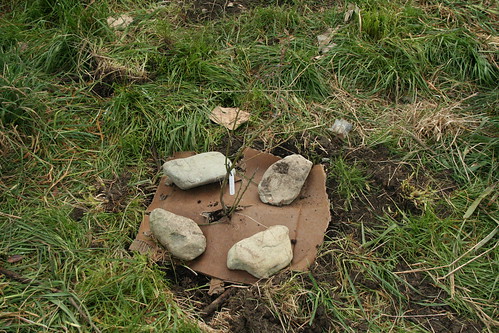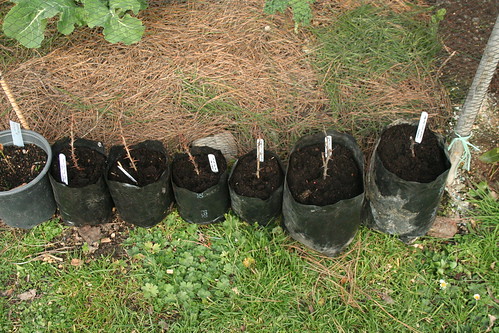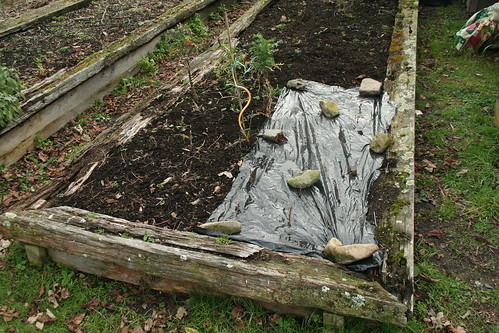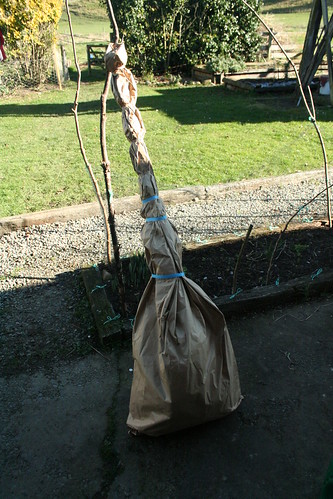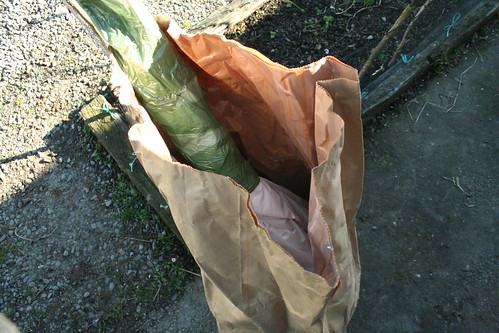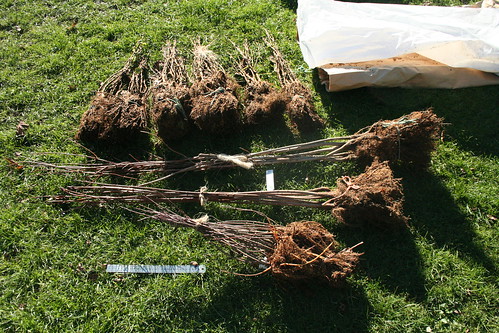Opium Poppies / 2013-2014
I bought opium poppy seeds from the national auction site. I have no interest in making my own opium, or heroin, but the idea of growing as many things I can eat as possible is one of my goals. In this case, the edible is poppy seeds.
Day 27: By this time, they're a pretty distinctive plant, and have germinated well.
Day 33: Six days later, from a different angle.
Day 93: Later some were planted out in an old barrow.
Day 94: A few more open every day.
Day 96: Two more days pass.
Day 103: Seven more days pass.
Day 112: Nine more days pass.
Day 126: Fourteen more days pass. The poppies are starting to die, as some yellow is appearing.
Day 141: Fifteen more days pass. At this point, they're all dead. Once the heads are dry enough, they can be cut off and cracked open to get the seeds. Wait too long, and the seeds are lost through holes in the heads. The soil I put in the barrow, I dug out of the watercourse at the front of the property, which I had earlier sprayed to kill the growth in there to allow better water flow. So I did not save any from these plants, for culinary purposes. They were traded with some lady for black double opium poppy seeds, which she gave me a lot of. Not sure I want to get those mixed up with these, as these look better. Black flowers are something I still need to be convinced of the merits of.
Day 96: The rest of the poppy seedlings were planted out on the west side of the house. Not so much sun there, so not so many photos.
Day 103: Seven days later. These were eventually the seeds I saved for culinary purposes.
Day 140: This is a dried seed head. It is basically a bowl shape with a windowed top. When the seed is dry enough, the gaps/windows on the top open and the seeds get out of the bowl. So if you wait too long, they'll be empty.
Here's the seeds obtained from one bulb.
And the seeds obtained from two bulbs in total. Really, look how much you get from two poppies. A herb package of poppy seeds costs around $2 at the supermarket on special. You would only need to harvest 10-20 poppies to get this many seeds, at most.
I think I should sow seed regularly over time, so as to get a continuous crop of poppies. If I did this, then I would both get an appealing ground cover, and would get a continuous supply of seeds. It will be interesting to see how many plants self-seed next spring, as well.
An additional note, is that the seeds are grey and not black, as the culinary poppy seeds purchased in the supermarket are - or the seeds on your bagel. But I understand that the grey is a opiate latex covering, and could possibly be washed off. I haven't done much research into this.

